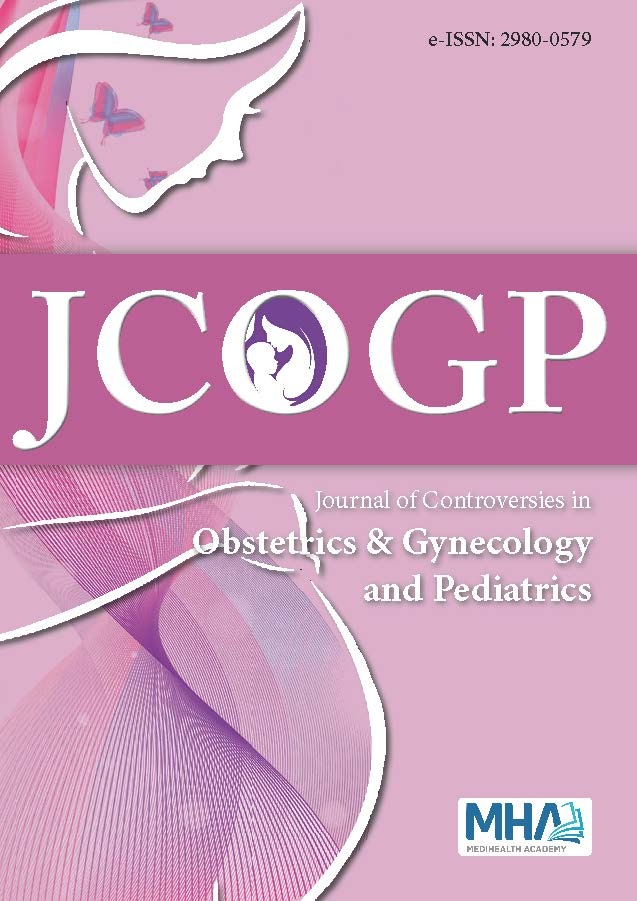1. Regan L, Rai R. Epidemiology and the medical causes of miscarriage.Baillieres Best Pract Res Clin Obstet Gynaecol. 2000;14(5):839-854.doi:10.1053/beog.2000.0123
2. Wang X, Chen C, Wang L, Chen D, Guang W, French J. Conception,early pregnancy loss, and time to clinical pregnancy: a population-basedprospective study. Fertil Steril. 2003;79(3):577-584. doi:10.1016/s0015-0282(02)04694-0
3. Klonoff-Cohen H, Lam-Kruglick P, Gonzalez C. Effects of maternal andpaternal alcohol consumption on the success rates of in vitro fertilizationand gamete intrafallopian transfer. Fertil Steril. 2003;79(2):330-339.doi:10.1016/s0015-0282(02)04582-x
4. Romero ST, Geiersbach KB, Paxton CN, et al. Differentiation of geneticabnormalities in early pregnancy loss. Ultrasound Obstet Gynecol.2015;45(1):89-94. doi:10.1002/uog.14713
5. Holmes VA, Barnes MS, Alexander HD, McFaul P, Wallace JM. VitaminD deficiency and insufficiency in pregnant women: a longitudinal study.Br J Nutr. 2009;102(6):876-881. doi:10.1017/S0007114509297236
6. Gürbüz T, Dokuzeylül Güngör N. Hiperemezis gravidarumetiyopatogenezinde vitamin D eksikliğinin rolü var mı ?. ADYÜ SağlıkBilimleri Derg. 2018; 4(2): 761-771. doi:10.30569/adiyamansaglik.408555
7. Park S, Yoon HK, Ryu HM, et al. Maternal vitamin D deficiency inearly pregnancy is not associated with gestational diabetes mellitusdevelopment or pregnancy outcomes in Korean pregnant women ina prospective study. J Nutr Sci Vitaminol (Tokyo). 2014;60(4):269-275.doi:10.3177/jnsv.60.269
8. Lanham-New SA, Buttriss JL, Miles LM, et al. Proceedings of theRank Forum on Vitamin D. Br J Nutr. 2011;105(1):144-156. doi:10.1017/S0007114510002576
9. Ross AC, Manson JE, Abrams SA, et al. The 2011 report on dietaryreference intakes for calcium and vitamin D from the Institute ofMedicine: what clinicians need to know. J Clin Endocrinol Metab.2011;96(1):53-58. doi:10.1210/jc.2010-2704
10. Holick MF. Vitamin D deficiency. N Engl J Med. 2007;357(3):266-281.doi:10.1056/NEJMra070553
11. Müller K, Diamant M, Bendtzen K. Inhibition of production andfunction of interleukin-6 by 1,25-dihydroxyvitamin D3. Immunol Lett.1991;28(2):115-120. doi:10.1016/0165-2478(91)90108-m
12. Díaz L, Noyola-Martínez N, Barrera D, et al. Calcitriol inhibits TNF-alpha-induced inflammatory cytokines in human trophoblasts. J ReprodImmunol. 2009;81(1):17-24. doi:10.1016/j.jri.2009.02.005
13. Liu PT, Stenger S, Li H, et al. Toll-like receptor triggering of a vitaminD-mediated human antimicrobial response. Science. 2006;311(5768):1770-1773. doi:10.1126/science.1123933
14. Liu N, Kaplan AT, Low J, et al. Vitamin D induces innate antibacterialresponses in human trophoblasts via an intracrine pathway. Biol Reprod.2009;80(3):398-406. doi:10.1095/biolreprod.108.073577
15. Weisman Y, Harell A, Edelstein S, David M, Spirer Z, Golander A. 1 alpha,25-Dihydroxyvitamin D3 and 24,25-dihydroxyvitamin D3 in vitrosynthesis by human decidua and placenta. Nature. 1979;281(5729):317-319. doi:10.1038/281317a0
16. Avila E, Díaz L, Barrera D, et al. Regulation of Vitamin D hydroxylasesgene expression by 1,25-dihydroxyvitamin D3 and cyclic AMP incultured human syncytiotrophoblasts. J Steroid Biochem Mol Biol.2007;103(1):90-96. doi:10.1016/j.jsbmb.2006.07.010
17. Halhali A, Díaz L, Sánchez I, Garabédian M, Bourges H, Larrea F. Effectsof IGF-I on 1,25-dihydroxyvitamin D(3) synthesis by human placenta inculture. Mol Hum Reprod. 1999;5(8):771-776. doi:10.1093/molehr/5.8.771
18. Noff D, Edelstein S. Vitamin D and its hydroxylated metabolites in therat. Placental and lacteal transport, subsequent metabolic pathways andtissue distribution. Horm Res. 1978;9(5):292-300. doi:10.1159/000178924
19. Kovacs CS, Kronenberg HM. Maternal-fetal calcium and bonemetabolism during pregnancy, puerperium, and lactation. Endocr Rev.1997;18(6):832-872. doi:10.1210/edrv.18.6.0319
20. Bischoff-Ferrari H. Vitamin D: what is an adequate vitamin D level andhow much supplementation is necessary?. Best Pract Res Clin Rheumatol.2009;23(6):789-795. doi:10.1016/j.berh.2009.09.005
21. Yu CK, Sykes L, Sethi M, Teoh TG, Robinson S. Vitamin D deficiencyand supplementation during pregnancy. Clin Endocrinol (Oxf).2009;70(5):685-690. doi:10.1111/j.1365-2265.2008.03403.x
22. Hollis BW, Johnson D, Hulsey TC, Ebeling M, Wagner CL. Vitamin Dsupplementation during pregnancy: double-blind, randomized clinicaltrial of safety and effectiveness [published correction appears in J BoneMiner Res. 2011 Dec; 26(12):3001]. J Bone Miner Res. 2011;26(10):2341-2357. doi:10.1002/jbmr.463
23. Pospechova K, Rozehnal V, Stejskalova L, et al. Expression and activityof vitamin D receptor in the human placenta and in choriocarcinomaBeWo and JEG-3 cell lines. Mol Cell Endocrinol. 2009;299(2):178-187.doi:10.1016/j.mce.2008.12.003
24. van Etten E, Mathieu C. Immunoregulation by 1,25-dihydroxyvitaminD3: basic concepts. J Steroid Biochem Mol Biol. 2005;97(1-2):93-101.doi:10.1016/j.jsbmb.2005.06.002
25. Thota C, Laknaur A, Farmer T, Ladson G, Al-Hendy A, Ismail N.Vitamin D regulates contractile profile in human uterine myometrialcells via NF-κB pathway. Am J Obstet Gynecol. 2014;210(4):347.e1-347.e10.doi:10.1016/j.ajog.2013.11.027
26. Evans KN, Nguyen L, Chan J, et al. Effects of 25-hydroxyvitamin D3 and1,25-dihydroxyvitamin D3 on cytokine production by human decidualcells. Biol Reprod. 2006;75(6):816-822. doi:10.1095/biolreprod.106.054056
27. Merlino A, Welsh T, Erdonmez T, et al. Nuclear progesterone receptorexpression in the human fetal membranes and decidua at term before andafter labor. Reprod Sci. 2009;16(4):357-363. doi:10.1177/1933719108328616
28. Holick MF, Chen TC. Vitamin D deficiency: a worldwide problem withhealth consequences. Am J Clin Nutr. 2008;87(4):1080S-6S. doi:10.1093/ajcn/87.4.1080S
29. Holmes VA, Barnes MS, Alexander HD, McFaul P, Wallace JM. VitaminD deficiency and insufficiency in pregnant women: a longitudinal study.Br J Nutr. 2009;102(6):876-881. doi:10.1017/S0007114509297236

